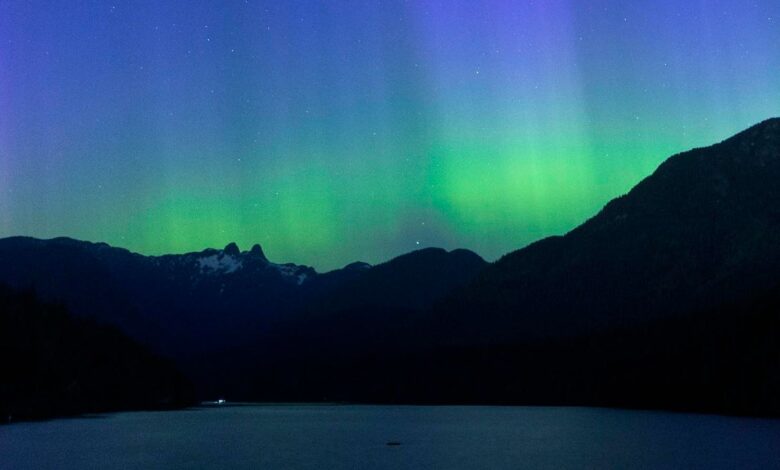15 States Could See Aurora Borealis

📝 usncan Note: 15 States Could See Aurora Borealis
Disclaimer: This content has been prepared based on currently trending topics to increase your awareness.
Topline
About 15 states have a shot at seeing a northern lights display on Monday night amid minor geomagnetic storms, according to a National Oceanic and Atmospheric Administration forecast, before the chance of seeing aurora borealis declines later in the week.
About 15 states may see the northern lights tonight. (Photo by Andrew Chin/Getty Images)
Getty Images
Key Facts
Monday night’s northern lights could have a Kp index as strong as 5, a measure of the lights’ strength on a scale of 0 to 9, indicating an aurora display that is “brighter” and “quite pleasing to look at,” according to NOAA’s forecast.
NOAA projected minor geomagnetic storms between Monday night and Tuesday morning, measured at G1 on a scale of G0 to G5.
Geomagnetic storms can create stronger displays of aurora borealis as the increase in solar wind accelerates electrons in Earth’s magnetic field, according to NOAA.
NOAA’s preliminary northern lights forecast for Tuesday is weaker, with an expected Kp index of 3 and no geomagnetic storms.
Where Will The Northern Lights Be Visible?
Alaskans will have the best chance at seeing the lights, according to NOAA’s forecast. Other states with a moderate likelihood of catching the aurora include Washington, Idaho, Montana, North Dakota, Minnesota, Michigan and Wisconsin. States included along NOAA’s projected “view line,” the point at which likelihood of seeing the aurora is lowest, include Wyoming, South Dakota, Iowa, New York, New Hampshire, Vermont and Maine.
What’s The Best Way To See The Northern Lights?
To boost chances at seeing the aurora, NOAA recommends finding a high vantage point, traveling as far north as possible and steering clear of light pollution. The lights are most visible between 10 p.m. and 2 a.m. local time, NOAA says.
What’s The Best Way To Photograph The Northern Lights?
Travel photographers told National Geographic some best practices for capturing the aurora include using a tripod for stability, using a wide-angle lens and a low shutter speed. For iPhone users, the camera app’s night mode can help make the lights pop.
Key Background
The northern lights have been particularly active over the past year because the sun is in its “solar maximum,” a period during its 11-year cycle in which solar activity is heightened. During the solar maximum, the sun experiences more geomagnetic storming, coronal mass ejections and other events that can produce strong aurora displays. But this solar maximum has exceeded scientists’ expectations, and NASA said last year the northern lights hit a 500-year peak. NASA scientists expect northern lights displays to remain frequent until about 2026, after which point the solar maximum will end and solar activity will begin to decline. Geomagnetic storms have produced especially notable lights shows in recent months, including some displays visible as far south as Florida and Texas. In October, an especially powerful X9.0-level solar flare, the strongest of this solar cycle, produced auroras that were visible in many states.
Further Reading
Northern Lights Displays Hit A 500-Year Peak In 2024—Here’s Where You Could Catch Aurora Borealis In 2025 (Forbes)



